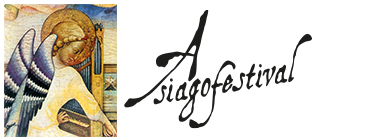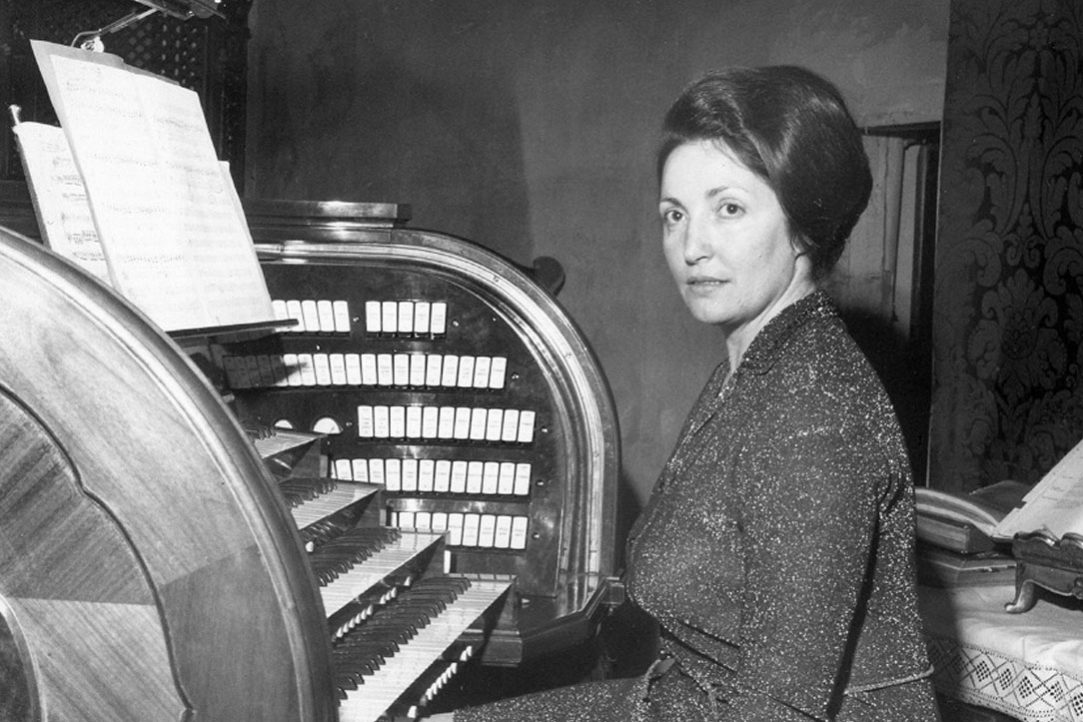Fiorella Benetti Brazzale, born in Asiago in 1934, after graduating in piano with Silvio Omizzolo, organ and organ composition with Wolfango Dalla Vecchia, perfected her skills in Belgium with Flor Peeters and in Paris with Gaston Litaize. She has taken master classes in prepolyphonic music and Gregorian chant, ancient music and instruments, and harpsichord.
Animated by generous idealism and fervent temperament, alongside the progress of her concert career she began her passionate teaching activities in state schools from early on, and her promotion of concert activities aimed at the popular dissemination of musical culture.
He warned of the risks of the distortion and trivialization of liturgical music resulting from the postconciliar revolution by doing his utmost to defend the great religious musical tradition, soon, however, forced to witness its widespread decline.
Since 1966 she has been a teacher of Principal Organ and Gregorian Chant at the Conservatory “B.Marcello ” in Venice, and since 1974 at the section of the same in Vicenza. In 1980 she became the first Director of the newly founded Conservatory “A.Pedrollo” in Vicenza, and from 1982 she became the Director of the Conservatory “A.Corelli” in Messina.
In 1966 he founded the “Istituto Musicale Città di Thiene”, developing it to the threshold of its transformation in 1971 into a detached section of the Conservatory of Padua. At the end of the 1960s he created in Asiago the International Concert Cycle, today “Asiagofestival”, to which he will devote his tireless work for more than twenty years, making it a point of reference in the national panorama of musical events
Countless are the public concerts of the students of his Organ classes, and his master classes on ancient music, organ interpretation and improvisation.
Remarkable is his publishing production, both in the transcription of unpublished motets by Martini and Toccate e Ricercari for organ by A.Padovano and B.Sper’in Dio, and in the original and innovative works for music education in middle and high schools. His “Educazione Musicale” of 1968, published by the “G.D’Anna” publishing house in Florence, became for many years the most adopted and imitated work in Italian middle schools.
He collaborates intensively in the preservation of the musical heritage of the “Cimbrian” culture of the Asiago plateau, recovering its tradition in concerts and various musical and record publications.
His numerous concerts in Italy and abroad have always attracted enthusiastic acclaim, especially for his marked musicality, interpretative sensitivity, particular adherence to the styles of the various organ schools, and his innate sense of color. Writes the Bayreuth “Nordbayerisch Kurier” on April 30, 1974: “In the Stadtkirche in Bayreuth…the performance was most brilliant…the artist played so admirably as to achieve an infinity of unusual coloristic effects…in the finale the Italian artist, interpreting Pachelbel and Bach, raised a sublime hymn to German organ music.”
Her vocation for composition led her to create numerous oratorios and pieces for organ, including “Durezze e ligature su nostalgici canti gregoriani” and “Quadri della Wieskirche,” in which her deep connection with the liturgical musical tradition sublimates and ignites in the most innovative and unconventional forms of great emotional impact.
He records for EMI, and for the “Angelicum” in Milan, and for IFO – Schott, and records for a variety of Italian and foreign radio organizations.
A profound connoisseur of the art of organ-making, she exercises constant activity for the preservation and respect of organs, becoming head of the testing and conservatory sector of the Historical-Environmental Heritage of the Diocese of Padua. She publishes numerous monographic works on ancient and valuable instruments of the Veneto region, making admirable engravings.
While continuing her concert activity throughout Europe, in the 1980s she became the owner of the organ of the Cathedral of Padua, devoting herself with passion to the creation and revitalization of the “Schools of Musical Orientation” in the same Diocese in collaboration with Don Fernando Pilli, realizing her ideal of the diffusion of musical education; the dozens of “schools” activated come to count thousands of students.
In 1992, a fatal illness, which struck her right next to the “console” of the Asiago organ, would account for her indefatigable vitality.


